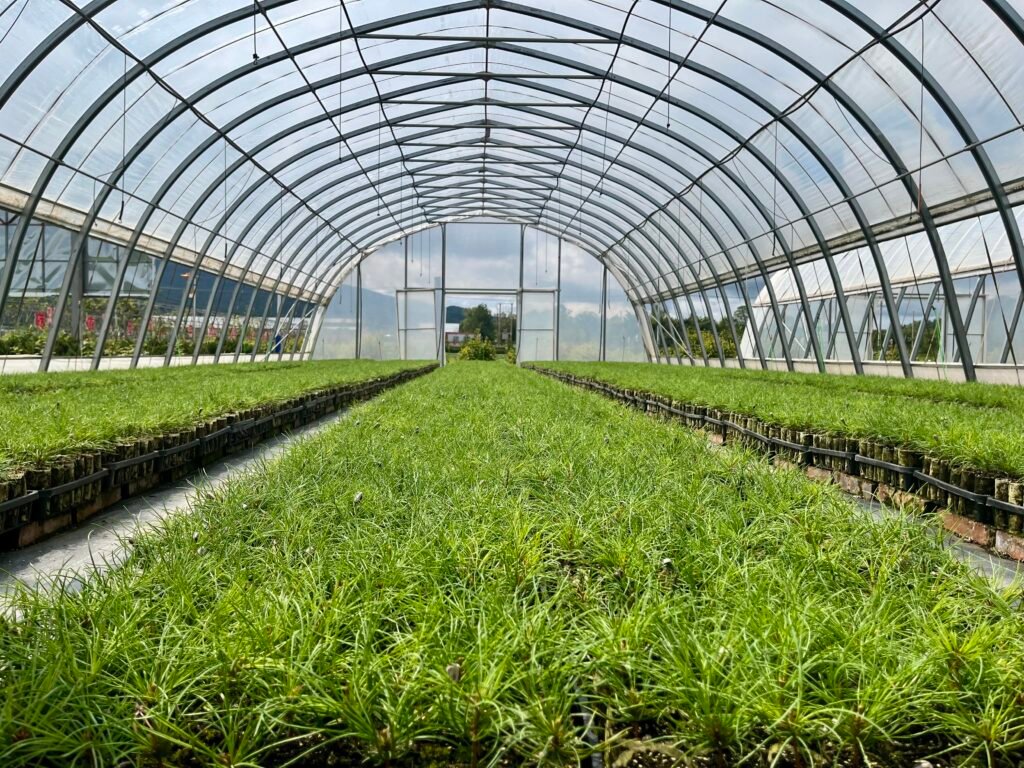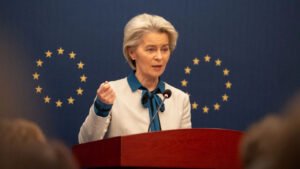In Turkiye, State-Owned Enterprises (SOEs) are evaluated under two main statutes: Public Economic Institutions (PEIs) and Economic State Enterprises (ESEs). In both statutes, the capital belongs to the state; the fundamental difference between them stems from the principles under which they operate.
PEIs operate with a focus on public service and social benefit, working on the basis of efficiency and stability. They cover financing deficits directly through the treasury and transfer any surpluses back to the treasury. ESEs, on the other hand, operate according to market conditions and commercial principles, particularly in strategic sectors. They try to cover their losses through market instruments (such as borrowing), while using their profits to increase growth and competitiveness.
In the People’s Republic of China, however, there is no definitive or legal status-based distinction among SOEs as in Turkiye. Enterprises in which the state has ownership rights can be flexibly structured depending on the country’s periodic needs and strategic goals. An SOE engaged in infrastructure, technology, finance, or strategic sectors may directly receive state support or be subject to state intervention when necessary. The main reason this flexible intervention and policy-making can be implemented without creating stress on institutions is the existence of strong party committees within the enterprises and the absolute supremacy of party discipline. Regardless of the capital structure or ownership, party discipline remains the determining factor in every situation. Therefore, Chinese SOEs are evaluated across a broad spectrum depending on the state’s shareholding ratios and the appointment of managers, and in practice, they may demonstrate a fluidity between a PEI and an ESE model in terms of operational principles.
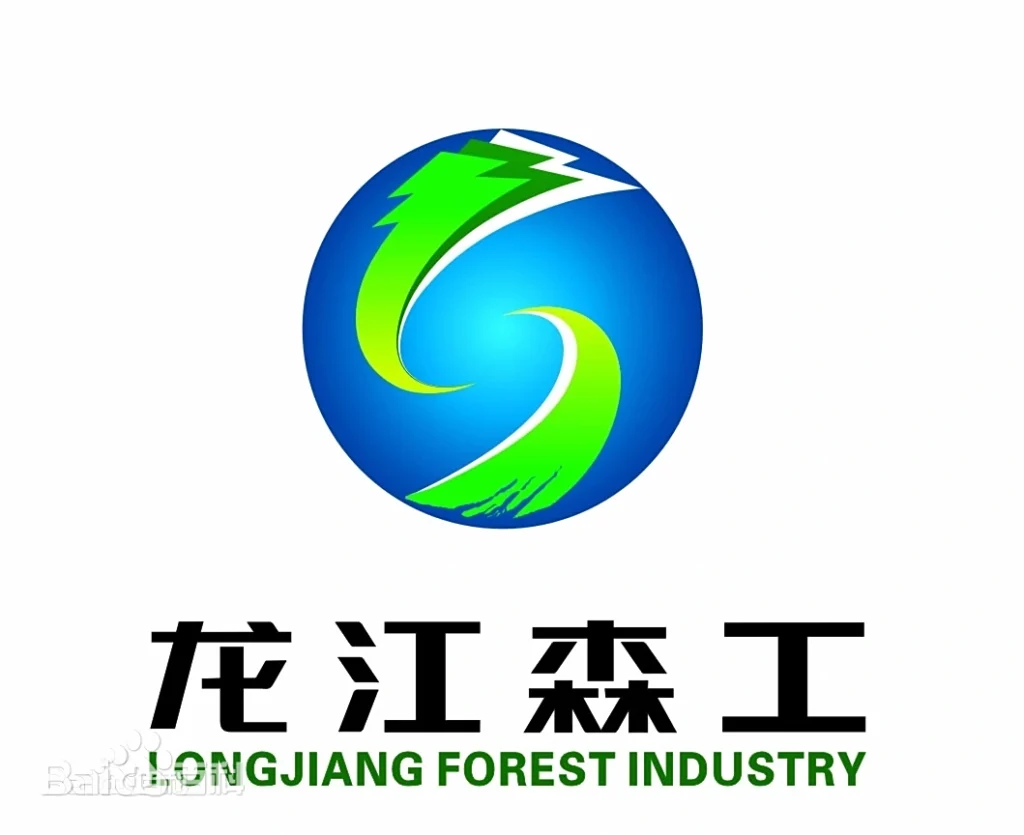
On August 25, 2025, at the invitation of the Longjiang Forest Industry Group (中国龙江森林工业集团有限公司, abbreviated as 龙江森工) operating in Heilongjiang Province, we had the opportunity to visit several of its enterprises in the cities of Harbin, Hailin, and Shangzhi. This visit, which was highly informative for understanding the structure, effectiveness, and level of development of SOEs in China, provided us with valuable insights to share.
The Longjiang Forest Industry Group was established on June 30, 2018, following the restructuring of the wholly state-controlled China Longjiang Forest Industry (Group) Corporation, as a large-scale, state-backed, public-interest-oriented entity. The Heilongjiang Provincial Party Committee and Provincial Government assigned the Group three main functions: ecological construction, industrial development, and forestry investment. The Group is responsible for the protection and management of key state-owned forest areas within its jurisdiction, carrying out activities such as afforestation, forest maintenance, protection of forest wetlands and wildlife species, regular field inspections, and wildfire prevention.
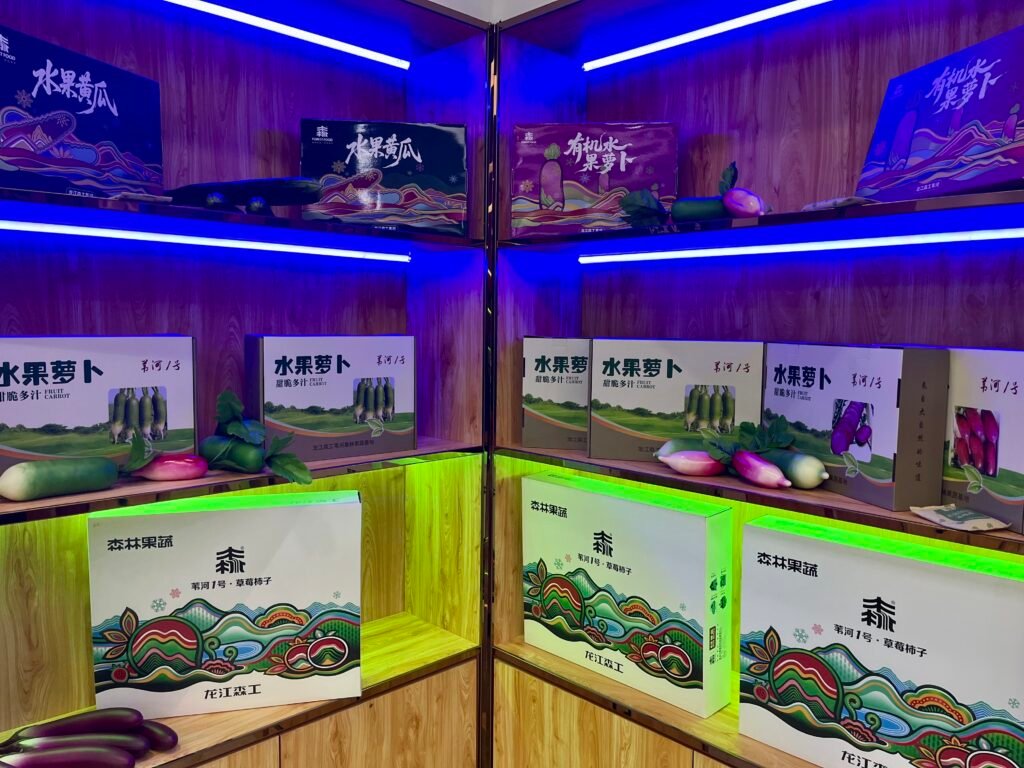
Within the Group, there are 23 forestry bureaus (and their affiliated 390 forestry sites and sub-enterprises), 17 specialized group companies, 13 urban processing factories, and 9 public institutions (such as schools). As of 2025, the Group operates more than 30 nature tourism enterprises, 20 of which are rated AAA or higher. Some enterprises, such as the “Snow Town” (雪乡), which hosted the opening and closing ceremonies of the Beijing Winter Olympics, have gained national and international fame. In addition, two brands—Heisen and Sen—producing hundreds of varieties of forest food products, also operate under the Group.
A Discipline of Meticulous Approach to Nature
Before addressing the region’s natural beauty and tourism potential, let us mention an enterprise that provides a successful example in combating forest fires—a matter that has recently been a pressing issue in our own country: the Weihe Forestry Bureau (苇河林业局), which operates over 206,000 hectares of land under the Longjiang Forest Industry Group.
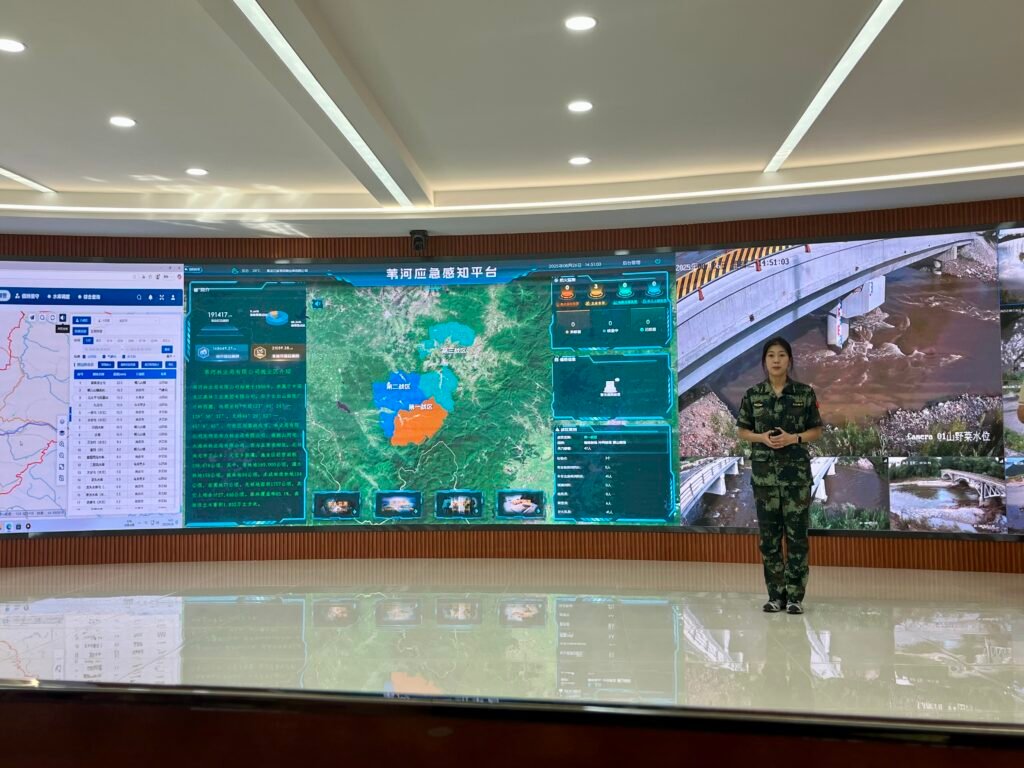
The first detail that caught our attention in this enterprise was that all employees wear camouflage uniforms and conduct themselves with strict discipline. We later learned that the practice of camouflage uniforms is common across most enterprises under the Longjiang Group. As a wholly state-owned enterprise, it not only undertakes core public services such as forest resource management, disaster response, and full-time environmental protection and supervision, but also operates in fields such as tourism, timber, and organic food trade.
A Fire-Resistant Practice: Precision Forestry
The Weihe Forestry Bureau employs an advanced technological network for precision forestry and smart agriculture in the areas under its responsibility. This system collects real-time data from smart weather stations, soil moisture and temperature sensors, satellite imagery, and unmanned aerial vehicles. The raw data (temperature, humidity, precipitation, soil conditions, and plant health) are transmitted via IoT networks to a cloud-based central platform. There, artificial intelligence and machine learning algorithms process the data into meaningful insights. The outputs are then delivered through mobile apps or web interfaces, providing operators with real-time irrigation recommendations, early fire warnings, disease risk predictions, and harvest efficiency analyses.
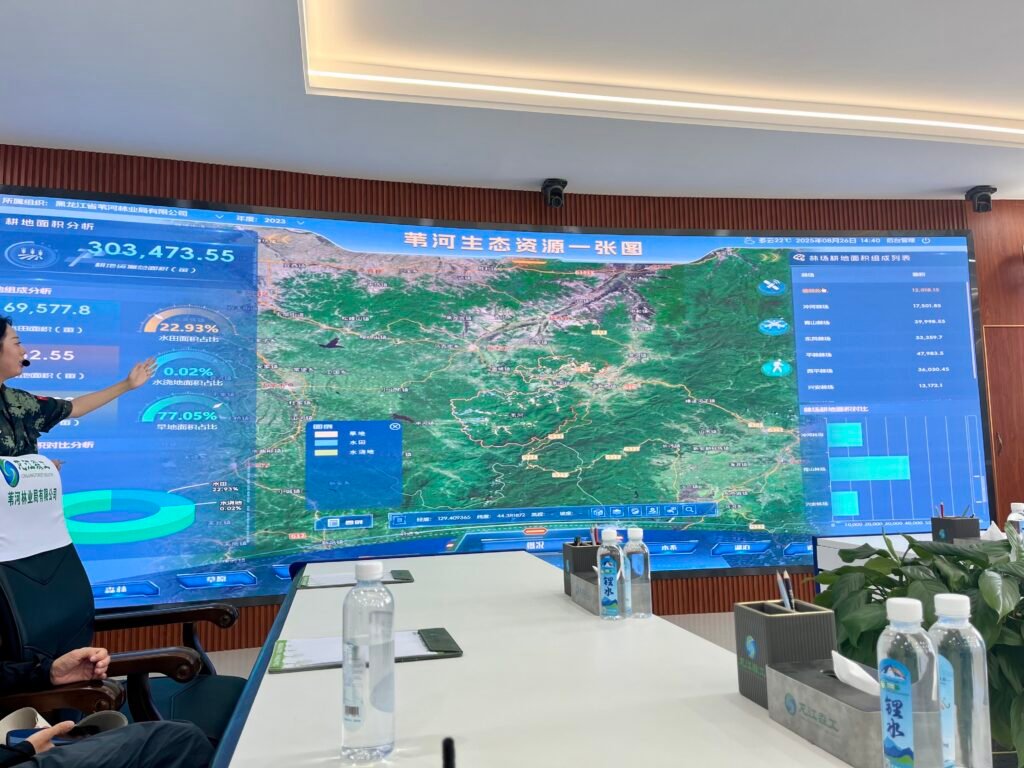
The Weihe Forestry Bureau consists of multiple departments operating in different fields, employing thousands of people. It also manages several farms/greenhouses with R&D facilities and field laboratories specializing in seed research, seedling cultivation techniques, and grafting. One of these sub-enterprises is the Pinglin Forest Farm (平林林场). To briefly review the organizational hierarchy discussed so far: at the provincial level, the Longjiang Forest Industry Group operates across 11 cities in Heilongjiang; the local bureau is the Weihe Forestry Bureau; and under it operates the Pinglin Forest Farm, which we will now describe. This hierarchical order allows for a focus on responsibility over vast forestlands while ensuring specialized units oversee every detail.

Established in 1958, the Pinglin Forest Farm serves as an ecological monitoring base. The farm spans 23,516 hectares, hosting greenhouses and interactive exhibition areas dedicated to endemic species. This spring alone, we learned that high-quality afforestation was completed over 2,102 mu (about 140 hectares). More than 20,000 trees and shrubs (such as elm, red pine, and yew) and up to 1,400 square meters of herbaceous flowers were carefully planted. With constant supervision, the annually observed “Zero Fire, Zero Fire Condition” target is meticulously achieved.
Agricultural R&D and Full-Time Seedling Cultivation
Another entity parallel to the Weihe Forestry Bureau under the Longjiang Forest Industry Group is the Yabuli Forestry Bureau (亚布力林业局). The first thing that drew our attention here was the laboratories adjacent to the greenhouses.
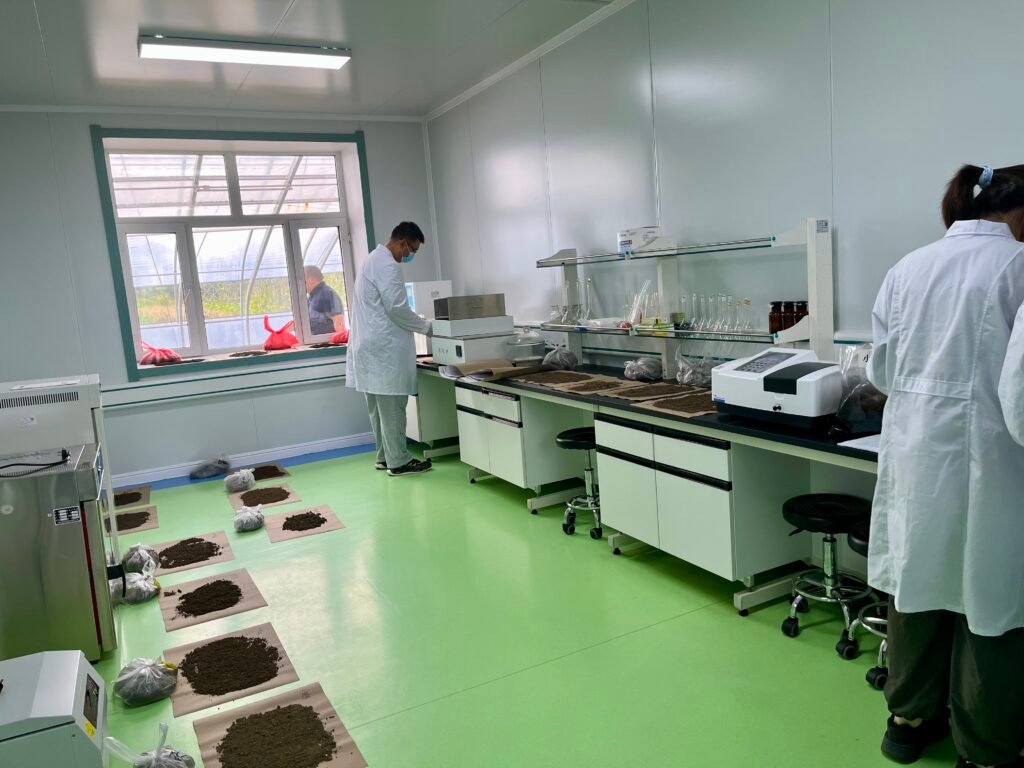
In the laboratories of the Yabuli Forestry Bureau, we learned that rare plants are cultivated using tissue culture techniques. Such practices are carried out in coordination with the Provincial Academy of Forestry Sciences (省林科院林业所). The site also contains many natural condition monitoring instruments. Data such as temperature, humidity, pressure, wind direction, wind speed, soil temperature, sunshine, precipitation volume, and precipitation type are collected in real time to support wildfire and flood forecasting. In addition, as in other forestry bureaus, sample museums displaying endemic plant, insect, and animal species are present.
Let us also share a general practice we learned here: under normal conditions, a pine nut tree begins producing cones at the age of 15. The pine seedlings carefully cultivated in the greenhouses are classified each year according to their age. Once they reach four years old, they are grafted with mature pines, thus halving the age at which they begin producing cones. Furthermore, these pines are later transplanted into the forest, ensuring proactive ecological protection.
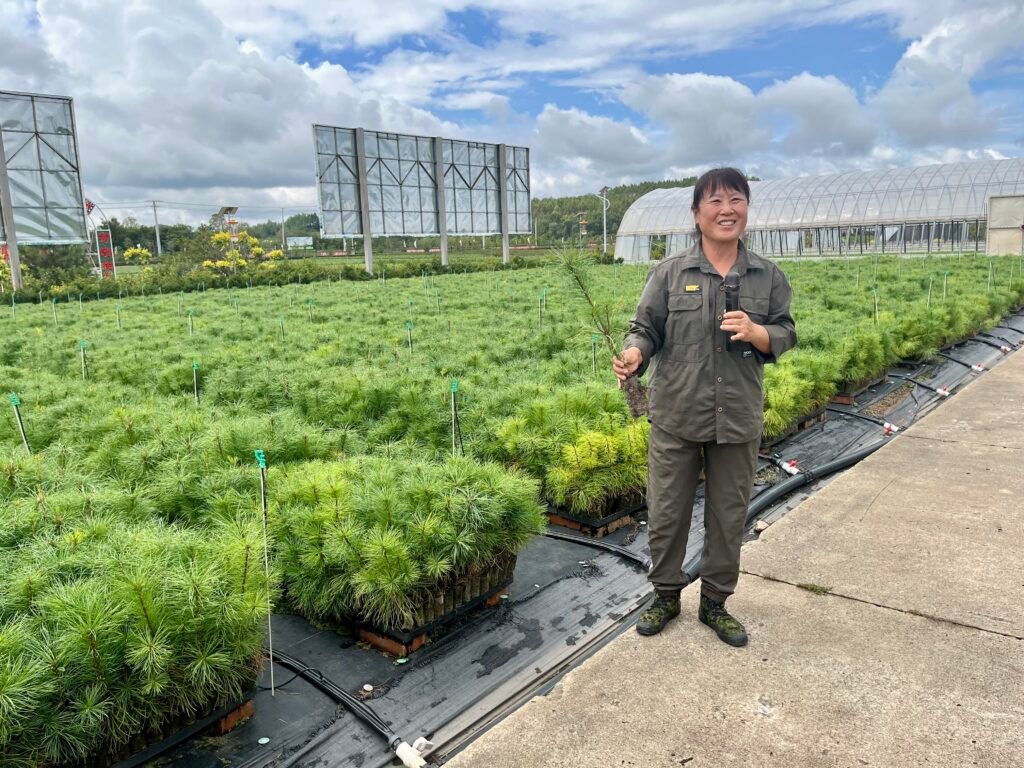
Conclusion: Public Orientation Is Scientific Orientation
“…All the problems people have dealt with, all the dangers they have faced, and all the successes they have achieved have always emerged from the waves of collective struggle.”
— Mustafa Kemal Atatürk, Nutuk, Atatürk’s Collected Works, Vol. 20, p. 23
All the enterprises and institutions we mentioned have reached their technical capacities within the “waves of a general orientation” adopted as national policy, and they continue to evolve accordingly. During the presentations of these activities, a frequently referenced slogan was “Lucid Waters and Lush Mountains Are Invaluable Assets” (绿水青山就是金山银山, abbreviated as the “Two Mountains Theory 两山论”), reflecting China’s determination to build an ecological civilization. Behind every effort lies a particular spirit. In every field where technical work was underway, we encountered slogans that gave meaning to those efforts. In every enterprise, a working culture has been fostered where the public-oriented spirit of the Communist Party of China (CPC) merges with the quality of operations.
To serve the general interest and to be public-oriented is, in the social sense, to be scientific. What constitutes scientific orientation here is the holistic and general-service understanding that attains consistency and inclusiveness capable of reaching every condition and every segment of society. The partial has no obligation to act scientifically, but the holistic must be consistent—hence, scientific. Holism means coordination, a shared theoretical basis, and inclusiveness. Societies can only truly dominate themselves through a public-oriented approach. The sovereignty of the people can only be secured through public ownership.

